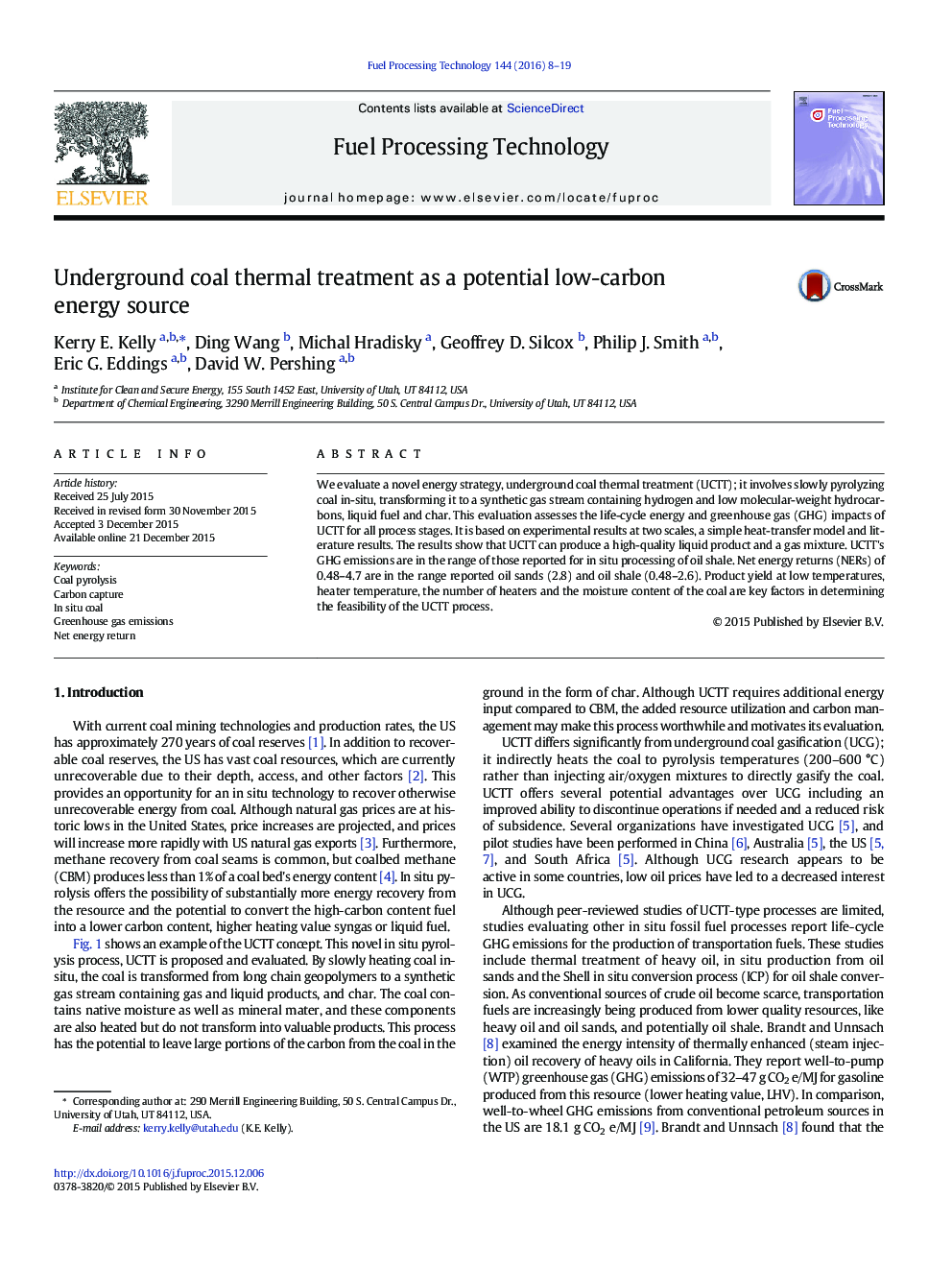| Article ID | Journal | Published Year | Pages | File Type |
|---|---|---|---|---|
| 209251 | Fuel Processing Technology | 2016 | 12 Pages |
•UCTT can produce a high-quality liquid product and gas mixture.•Product yield at low temperatures, heating configuration and coal moisture content are key factors to UCTT’s feasibility.•NERs and GHG emissions are in the range of those reported for in situ production of oil shale.
We evaluate a novel energy strategy, underground coal thermal treatment (UCTT); it involves slowly pyrolyzing coal in-situ, transforming it to a synthetic gas stream containing hydrogen and low molecular-weight hydrocarbons, liquid fuel and char. This evaluation assesses the life-cycle energy and greenhouse gas (GHG) impacts of UCTT for all process stages. It is based on experimental results at two scales, a simple heat-transfer model and literature results. The results show that UCTT can produce a high-quality liquid product and a gas mixture. UCTT's GHG emissions are in the range of those reported for in situ processing of oil shale. Net energy returns (NERs) of 0.48–4.7 are in the range reported oil sands (2.8) and oil shale (0.48–2.6). Product yield at low temperatures, heater temperature, the number of heaters and the moisture content of the coal are key factors in determining the feasibility of the UCTT process.
